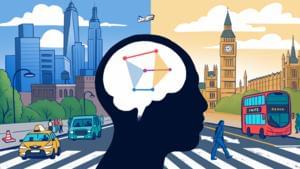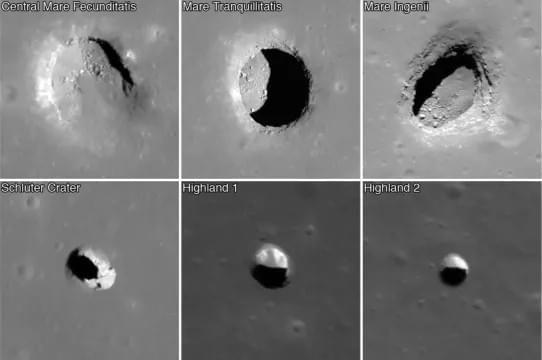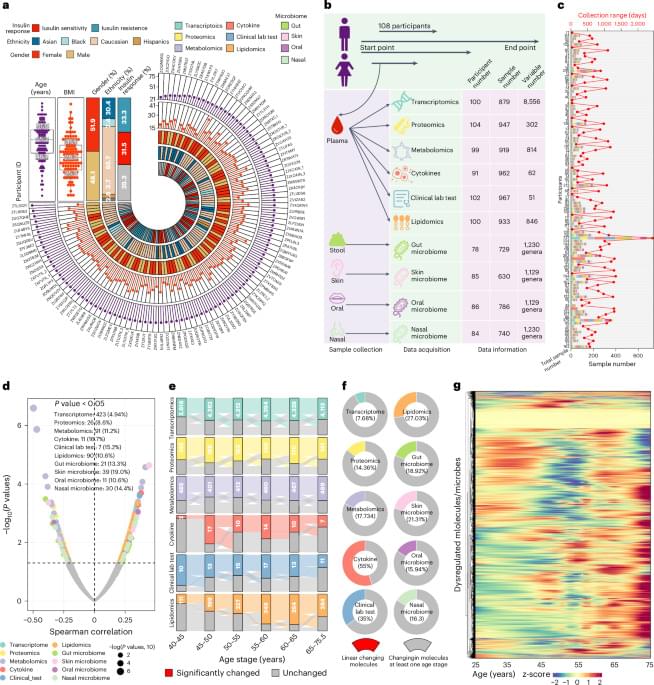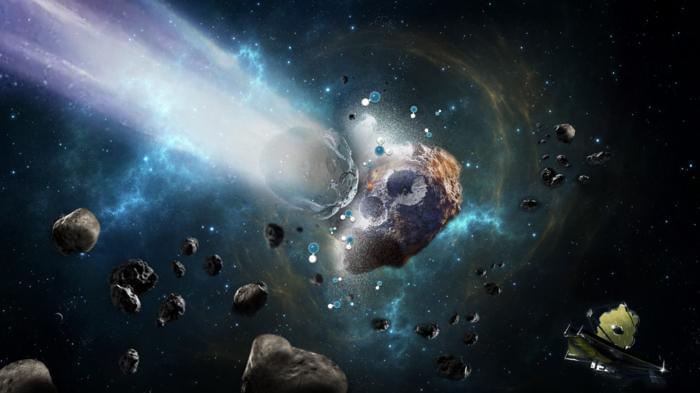The novel physics of biomolecular condensates could explain how these droplets help cells do their jobs.


The novel physics of biomolecular condensates could explain how these droplets help cells do their jobs.

In the quantum realm, a particle’s properties can be separate from the particle itself, including its angular momentum – which could require a rethinking of fundamental laws.

“These are the oldest rocks that may have been deposited by water, that we’ve ever laid hands or rover arms on,” said Dr. Benjamin Weiss. “That’s exciting, because it means these are the most promising rocks that may have preserved fossils, and signatures of life.”
Did life once exist on Mars, and if so, where will we find it? This is what a recent study published in AGU Advances hopes to address as a team of several dozen international researchers led by the Massachusetts Institute of Technology (MIT) investigated rocks samples obtained by NASA’s Perseverance (Percy) rover obtained in Jezero Crater on Mars, and which allegedly contain minerals only found in water. This study holds the potential to help scientists better understand the conditions for life to have emerged on the Red Planet long ago, along with identifying what evidence could be used to find life elsewhere in the solar system.
For the study, the researchers analyzed data obtained from seven rock samples collected by Percy along Jezero’s western slope, which scientists have hypothesized was an ancient lake long ago. After examining Percy’s images of the surrounding area and the chemical analyses from the rock samples, the team determined that the rocks contain evidence of water, meaning this location likely contained a lake long ago. However, the potential for this lake having life is still unknown since the team did not identify evidence of organic matter within the samples. Despite this, the team determined that the rocks were created more than 3.5 billion years ago, long before life emerged on the Earth.

This explores how the human brain forms abstract concepts and adapts to changing environments, specifically looking at how neurons in certain brain regions contribute to complex thinking.
It takes brains to infer how any two things in the world relate to each other, whether it’s the way bad weather links to commuting delays or how environmental conditions lead to the evolution of species. A new study based on recordings in the brains of people has yielded a pathbreaking trove of data that researchers now have used to reveal, with more clarity than ever, the neural incarnations of inferential reasoning.

Identifying one faulty turbine in a wind farm, which can involve looking at hundreds of signals and millions of data points, is akin to finding a needle in a haystack.
Engineers often streamline this complex problem using deep-learning models that can detect anomalies in measurements taken repeatedly over time by each turbine, known as time-series data.
But with hundreds of wind turbines recording dozens of signals each hour, training a deep-learning model to analyze time-series data is costly and cumbersome. This is compounded by the fact that the model may need to be retrained after deployment, and wind farm operators may lack the necessary machine-learning expertise.

Leonard Rome’s lab discovered an odd, abundant component of cells in the 1980s—and he’s still trying to figure out what it does.

Understanding the molecular changes underlying aging is important for developing biomarkers and healthy aging interventions. In this study, the authors used comprehensive multi-omics data to reveal nonlinear molecular profiles across chronological ages, highlighting two substantial variations observed around ages 40 and 60, which are linked to increased disease risks.
The US National Institute of Standards and Technology has released Federal Information Processing Standards (FIPS) publications for three quantum-resistant cryptographic algorithms.
In a landmark announcement, the National Institute of Standards and Technology (NIST) has published its first set of post-quantum cryptography (PQC) standards. This announcement serves as an inflection point in modern cybersecurity: as the global benchmark for cryptography, the NIST standards signal to enterprises, government agencies, and supply chain vendors that the time has come to make the world’s information security systems resistant to future cryptographically relevant quantum computers.
NIST released FIPS publications for three quantum-resistant cryptographic algorithms.

“Asteroids are leftovers from the planetary formation process, so their compositions vary depending on where they formed in the solar nebula,” said Dr. Anicia Arredondo. “Hydration that is endogenous could suggest that Psyche is not the remnant core of a protoplanet.”
Could a metallic asteroid contain water and what can this teach us about the asteroid’s formation and evolution? This is what a recent study due for publication in the Planetary Science Journal hopes to address as a team of researchers led by the Southwest Research Institute (SwRI) investigated whether the metallic asteroid Psyche —which is one of the largest objects in the main asteroid belt—could contain evidence of water and hydration.
This study holds the potential to help scientists better understand the formation and evolution of asteroids and what this can teach us about the history of the solar system. This study also comes as NASA’s Psyche spacecraft is currently en route to the Psyche asteroid and is scheduled to arrive in August 2029.
For the study, the researchers used NASA’s powerful James Webb Space Telescope to observe the 140-mile diameter asteroid, which detected evidence of what are known as hydroxyl molecules, or molecules containing bonded hydrogen and oxygen, and specifically identified traces of water, more commonly known as H2O in its molecular form. Now, the question arises as to if the water got there from exogenous (external) or endogenous (internal) processes.